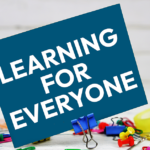When most people think of instructional design, they picture someone behind a laptop, clicking through Articulate Storyline, Rise, or Adobe Captivate. And yes, developing eLearning is one part of the role, but it barely scratches the surface. Instructional design services go far beyond “just developing eLearning.”
From uncovering performance gaps to shaping long-term learning strategy, instructional designers deliver value that many organizations don’t even realize they’re missing. If you’ve ever wondered what an instructional designer actually does (besides build courses), this article pulls back the curtain on the end-to-end value they provide, from storyboards to strategy.
Beyond eLearning Development: The Consulting Role
Instructional design consultants aren’t simply developers who take content and drop it into an authoring tool. At their core, they’re consultants. The best IDs step into a project and start with questions like:
- What’s the real business problem we’re solving?
- Is training even the right solution?
- How will we know if we are successful?
That perspective is powerful. It keeps organizations from wasting time and money on training that looks nice but doesn’t move the needle. IDs act as translators between subject matter experts (SMEs) and business leaders. They cut through jargon and bring clarity, turning raw expertise into structured learning that connects directly to organizational goals.
Think of them as both architects and guides: they design the blueprint and make sure everyone involved is heading in the same direction.
Needs Analysis and Goal Alignment
The first step in instructional design services isn’t creating slides or writing scripts. It’s listening.
IDs dig into the audience, the business context, and the desired outcomes. This could involve:
- Interviewing SMEs and stakeholders.
- Analyzing performance data to see where employees are struggling.
- Observing job tasks to identify skill gaps.
This front-end analysis is where the magic happens. Without it, companies often jump straight to training without confirming whether it’s needed or what type of training will be effective.
For example, if a sales team isn’t meeting targets, it’s tempting to throw product training at the problem. But a skilled instructional designer might uncover that the real gap is in customer conversations, not product knowledge. That shifts the solution from “new course” to “coaching simulations,” which has a much bigger impact.
When done right, needs analysis ensures that training aligns with measurable business goals, not just a vague “we need more eLearning.”
Download Your Copy of Our Sample Needs Analysis Report
Needs Analysis, Objectives, and Goal Alignment
The first step isn’t building a course. It’s clarifying what must be learned or the behavior that needs to change. Instructional designers start by listening and diagnosing, then lock in performance objectives (what people must do on the job) and learning objectives (what they must know/practice to do it reliably).
1) Start with performance objectives (the job outcome).
- Define the exact behavior, in what conditions, and how you’ll judge success.
- Tie it to a business KPI so it’s measurable and meaningful.
Performance objective formula:
Given [context/tools], the employee will [ Bloom’s taxonomy verb – specific behavior] to criteria [accuracy/speed/quality], as measured by [system/report/observation].
Examples:
- Given the new CRM, reps will complete and enter a customer interaction record with all required fields in under 2 minutes and with 0 errors, as measured by CRM audit reports.
- Given the lock-out/tag-out procedure, technicians will demonstrate and execute equipment lockout steps in the correct sequence with 100% compliance, verified by supervisor checklist.
- Given the Claims Workflow, associates will analyze claim details and apply adjudication rules to resolve a standard claim in ≤ 12 minutes with ≤ 1% rework, per QA dashboard.
2) Derive learning objectives (the enablers).
Once the performance target is clear, identify the knowledge/skills/practice needed to hit it. Keep them observable and assessable.
Learning objective formula:
Learner will be able to [Bloom’s action verb] [task/skill] to [level/criteria] given [conditions/resources].
Examples aligned to the performance targets above:
- Identify required CRM fields and complete a practice record accurately 3 times in a row using a sandbox.
- Sequence lock-out/tag-out steps correctly in a simulation 5/5 attempts.
- Apply decision rules to 10 sample claims with ≥ 90% accuracy.
3) Validate alignment with stakeholders.
Instructional design consultants review the objectives with leaders and SMEs to validate:
- The behavior change will actually move the KPI (sales, quality, time-to-proficiency, safety, CSAT).
- Non-training barriers (tools, incentives, process, bandwidth) are addressed or flagged.
- Success criteria are realistic, and data is accessible.
4) Map objectives to design, development, and evaluation.
Each performance objective should map to:
- Activities & practice: scenarios, simulations, coaching, job aids.
- Assessments: how learners prove readiness (not just a quiz).
- Data plan: where results will show up (LMS/xAPI, QA audits, dashboards).
Quick checklist (use before any build begins):
- Performance gap is defined in business terms (baseline → target).
- Performance objective states behavior, conditions, and criteria.
- Learning objectives are observable and assessable.
- Non-training issues are noted and escalated (process, systems, capacity).
- Measurement sources identified (reports, audits, xAPI, surveys).
- Stakeholders sign off on objectives and success metrics.
Nail these objectives, and everything else flows. Storyboards become sharper, practice feels authentic, and evaluation actually proves impact.
Development and Technology Expertise
Here’s where instructional designers often get the spotlight: building the actual learning materials. And yes, this is where tools like Articulate Storyline, Rise, Adobe Captivate, Vyond, or Camtasia come into play.
But even here, it’s not about pushing buttons. It’s about using technology strategically. IDs know how to:
- Create branching scenarios that mimic real decisions.
- Add simulations that let employees practice skills safely.
- Weave in microlearning for reinforcement.
- Ensure courses are accessible and mobile-friendly.
This stage is where a good design becomes a great experience. The tools are only as powerful as the strategy behind them, and instructional designers bring that strategic touch.
Measuring Impact and Continuous Improvement
Here’s something many organizations overlook: instructional design services don’t stop once a course is launched.
A well-rounded instructional designer knows how to measure whether the training worked. They may use Kirkpatrick’s four levels (reaction, learning, behavior, results) or lean on xAPI to track learner activity in more detail.
Common metrics might include:
- Faster employee onboarding times.
- Fewer compliance errors.
- Higher customer satisfaction scores.
- Improved sales numbers.
By tying learning back to results, IDs prove the ROI of training. That’s a big shift from the days when “completion rate” was the only metric anyone tracked.
And if the results aren’t where they should be? IDs adjust. They analyze feedback, refine content, and continuously improve learning solutions.
Why Companies Outsource Instructional Design Services
If instructional design is this valuable, why don’t all companies just hire large permanent teams? The reality is that demand for instructional design is rarely flat or steady. It comes in waves, driven by projects, product launches, compliance updates, mergers, new software rollouts, or a shift in strategy. Internal teams often don’t have the capacity to absorb those sudden spikes without burning out or delaying delivery.
That’s why outsourcing instructional design services is such a practical solution. Contract instructional designers bring:
- Flexibility: Scale up quickly when projects surge, then scale down when demand eases.
- Speed: Experienced consultants already know the tools and processes, so they can hit the ground running.
- Fresh perspective: External IDs can spot issues or opportunities that internal teams might overlook.
- Specialized skills: Need VR training, gamification, or a system simulation? Or maybe AI support to rapidly analyze gaps, draft scenarios, and shorten development cycles? Specialized consultants bring niche expertise you may not have on staff.
Outsourcing ensures organizations always have the right talent at the right time without carrying the fixed cost of a team that may sit idle between initiatives.
At TrainingPros, we see this all the time. Clients come to us when their internal team is overwhelmed or when they need specialized expertise. Our vetted consultants step in quickly, align with the business needs, and keep projects moving. That kind of support helps companies avoid delays and costly mistakes.
Wrapping It Up
Instructional design services are far more than “just developing eLearning.” From uncovering the real business problem to creating design blueprints, building engaging courses, and measuring results, IDs deliver strategy, not just content.
If you’re only using instructional design for development, you’re leaving value on the table. The full scope, from storyboards to strategy, ensures training doesn’t just check a box but truly drives performance.
Download Your Copy of Trends in Learning & Development: Insights from Learning Leaders
Ready to Work with Us?
Does your L&D team have more projects than people? TrainingPros has been named a Top 20 Staffing Company internationally by Training Industry, and recognized as a Smartchoice® Preferred Provider by Brandon Hall Group for 2025. We’re also proud to be named a Champion of Learning by the Association for Talent Development (ATD)—an international honor that reflects our dedication to excellence in corporate learning. These accolades underscore TrainingPros’ unwavering commitment to delivering high-quality, tailored training solutions.
If your projects need instructional design consultants, eLearning developers, or other L&D consultants for your custom content projects, reach out to one of our industry-expert relationship managers today.
When you have more projects than people™, let TrainingPros find the right consultant to start your project with confidence. Schedule a consultation today.
- 1share
- LinkedIn0
- Twitter0
- Facebook0
- Love This1











